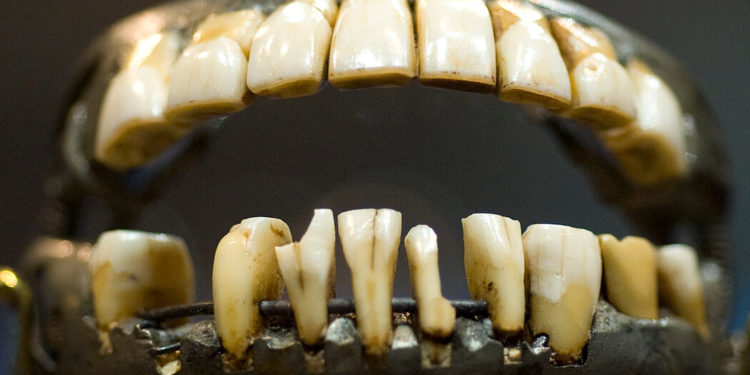Mark Twain once marveled about science, “One gets such wholesale returns of conjecture out of such a trifling investment of fact.”
Indeed, the 19th-century French biologist Georges Cuvier bragged that he could reconstruct an entire extinct species by looking at a single tooth. If Cuvier was exaggerating, it wasn’t by much: To a trained eye, the contours of a tooth can reveal a surprising amount about an animal’s size, shape, diet, environment and behavior.
In his wide-ranging new book, “Bite,” Bill Schutt seeks to outdo even Cuvier. Schutt, the author of both fiction and nonfiction titles and a research associate at the American Museum of Natural History, aims to trace not just the history of individual creatures, but of all animal life on Earth, based entirely on teeth.
Because teeth fossilize far more readily than any other body part, they lend themselves well to such detective work. Teeth allowed jawed vertebrates “to undergo an explosion in diversity,” Schutt writes, “permitting them to feed on every conceivable form of nutrient- and energy-containing matter — from gnats to nuts.”
Teeth also evolved into tusks and fangs that expanded the animal behavioral repertoire to include digging, scraping, fighting, building dams and more. Narwhal teeth-tusks double as sensory organs, and some walruses use theirs for locomotion. In sum, teeth are responsible for “much of the diversity and long-term evolutionary success of the vertebrates.”
Each of the first eight chapters focuses on one oddly toothed animal, and the details of their lives both amaze and horrify. Cichlid fish have teeth so precisely tuned that they can tear the scales off either the left or right side of prey, but not both. Some venomous shrews devour their victims live over several weeks, keeping them breathing but immobile with nips of paralyzing venom.
Even the stories of less exotic teeth provide fascinating insight into evolutionary history. The 55-million-year-old ancestor of horses, for instance, had flat, low-slung molars. Later descendants had thicker, taller back teeth that could withstand more grinding. From this, scientists conclude that the paleo-horse diet shifted over time from soft leaves and fruits to gritty, silica-rich grasses. This, in turn, implies that the leafy forests the animals once called home must have evolved into grasslands, likely as a result of changing weather patterns. The lack of cover from predators would have affected the evolution of the horse’s legs, skulls, and eyes, too. Diet, anatomy, climatic shifts: It all emerges from a smattering of teeth.
Later chapters of “Bite” shift focus to humans and our kin. The fossil record consists almost entirely of teeth; they’re just about the only physical trace we have left of our evolution. Fossil teeth have also disproved the stereotype of Neanderthals as brutish raw-meat eaters who lacked the skills and smarts to cook. Researchers who’ve examined the crusts of dental calculus on Neanderthal teeth have found a variety of plant matter inside (date palms, legumes, starches), as well as molecular changes characteristic of high heat. Neanderthals had cuisine.
Like it or not, people today also attach social value to teeth. Schutt explores this topic in part through a lively chapter on George Washington’s dentures. Poor George had just one lonely tooth left in his jaw on his first Inauguration Day, and he had lost even that holdout by the time he left office. He likely wore dentures less for eating than to help his elocution during speeches — and to look more presidential.
Surprisingly, though, Schutt barely addresses the modern misery of overcrowded jaws and twisted teeth. Despite their lack of any orthodontic tools, ancient hunter-gatherers had far straighter teeth than most people today — a fact that some biologists trace to a diet that’s heavy on soft, processed food, since the work required to chew raw food can stimulate jawbone growth, providing more space for teeth to fit.
At times, “Bite” is larded with jargon, and the tales do wander occasionally; Schutt ends one riff on venoms by admitting that the fish he’s describing actually deploy them with poky spines, not teeth. But this arises from the forgivable sin of enthusiasm — an enthusiasm that’s infectious.
I ended up reading the book with a computer open on my lap, furiously firing off search queries every third page: “echidna tongue,” “Etruscan tooth grills,” “Oregon highway slime fiasco.” Schutt calls teeth “time capsules,” and aptly so. Crack one open, and anything and everything, from the silly to the sublime, can tumble out.
The post A History of Teeth That’s Chock-Full of Trivia to Chew On appeared first on New York Times.



















